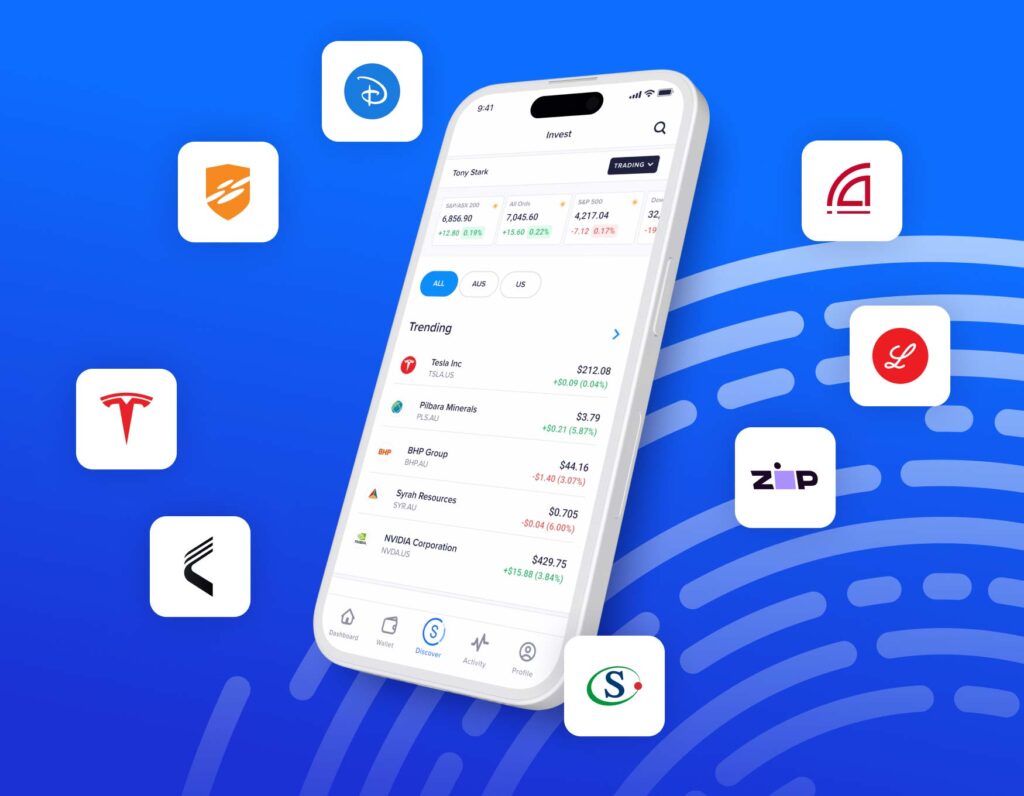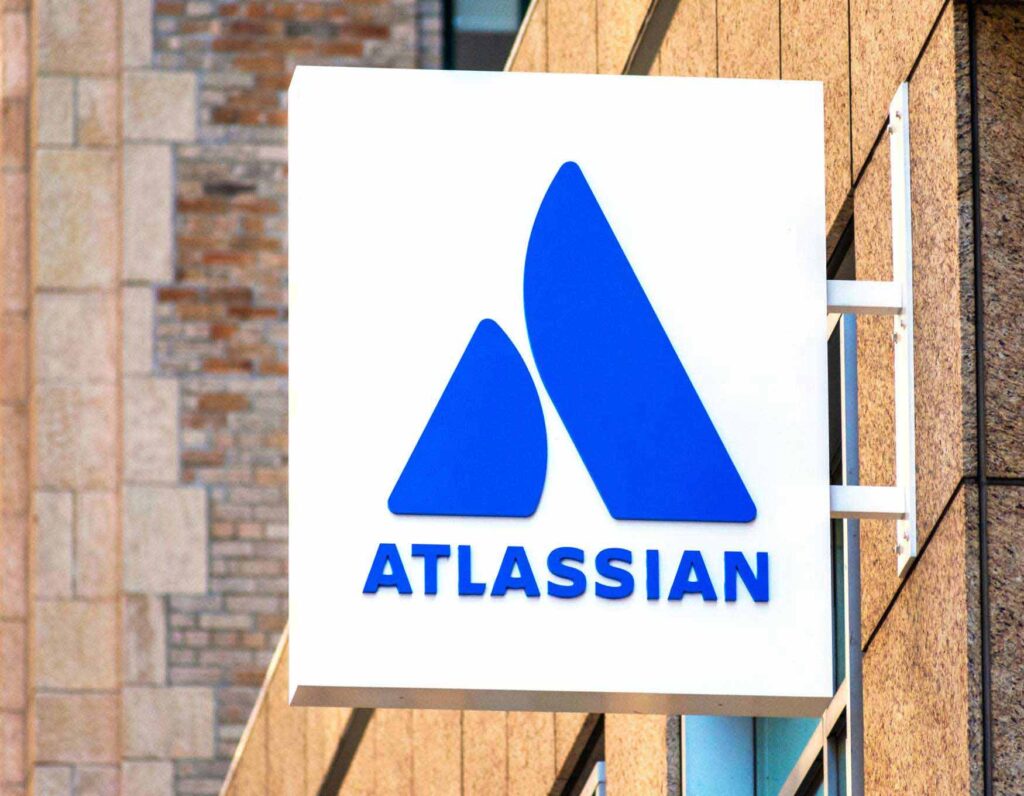Scan this article:
Imagine you own 447,470 Bitcoins and see it now trading at US$100,000 – your entire balance would be worth a staggering US$44,747,000,000. Wouldn’t that be a dream?
For one company, it’s reality. MicroStrategy (MSTR.US), a Nasdaq-listed business analytics firm, held 447,470 Bitcoins at the end of 2024.
As the world’s largest corporate holder of Bitcoin plus the world’s largest Bitcoin Treasury Company, MicroStrategy’s share price soared by a high of 650% over the last year following Bitcoin’s strong gains.
So what in the world is it and what does it do? Let’s take a deep dive into MicroStrategy.
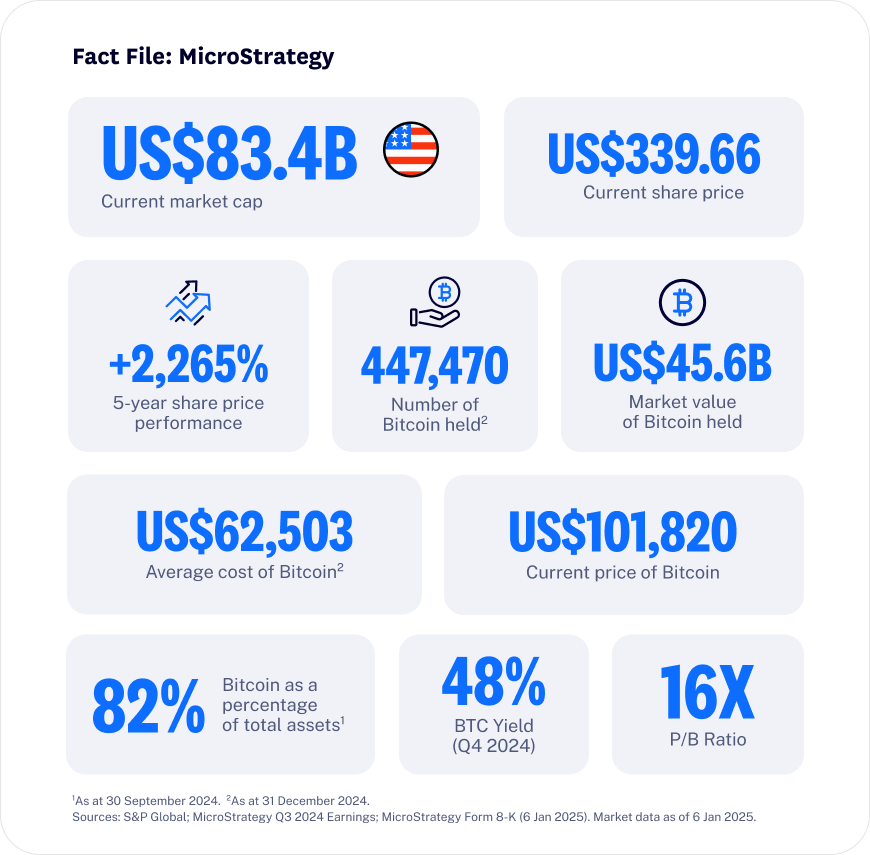
What is MicroStrategy?
Founded in 1989, MicroStrategy began with US$250,000 in capital from DuPont to develop data analytics software for large datasets.
Throughout its history – which saw it ride the dot-com bubble from boom to bust, its analytics software go from mobile to cloud-based, and its software evolving from MicroStrategy 3.0 to MicroStrategy 11 – the company was known as a player in the data analytics industry, earning revenues through subscriptions.
This all changed in August 2020 when MicroStrategy’s board announced their decision to invest US$250 million in Bitcoin as a treasury reserve asset. Or in simpler terms, they decided to use Bitcoin as a substitute for cash.
Why did MicroStrategy invest in Bitcoin?
Back in mid-2020, at the eve of MicroStrategy’s transformation into a Bitcoin treasury, the company had recorded excess amounts of cash on its balance sheet, totalling up to approximately US$500 million.
Wary of its growing pile of unproductive cash that may later lose purchase power due to inflation, then-CEO Michael Saylor wanted to find a way to put this massive reserve to work.
But at the time, interest rates were trending at near-zero levels as governments grappled with the economic effects of COVID-19. Similarly, commodities such as gold failed to adequately perform.
Given the economic environment and finding no other areas within the business to further invest in, Saylor and his team ended up making one decision that transformed it to what it is today: making Bitcoin its treasury reserve asset.
“So our balance sheet strategy is, don't hold cash if it's going to be a liability. Invest it back into ourselves. If we can't invest it in our own stock, invest it in Bitcoin.”
- Michael Saylor, Founder and Chairman of MicroStrategy, Company Conference Presentation on 9 September 2020.
What is a Bitcoin Treasury Company?
A Bitcoin Treasury Company is a company that holds Bitcoin as part of its financial reserves, treating it like a long-term investment to protect against inflation, diversify assets or take advantage of its growth potential.
Since MicroStrategy pivoted towards this strategy, the company has grown its Bitcoin reserve to today’s total of 447,470 Bitcoins. Its purchases were funded by a mix of cashflow from operations, long-term debt issuance and equity offerings.
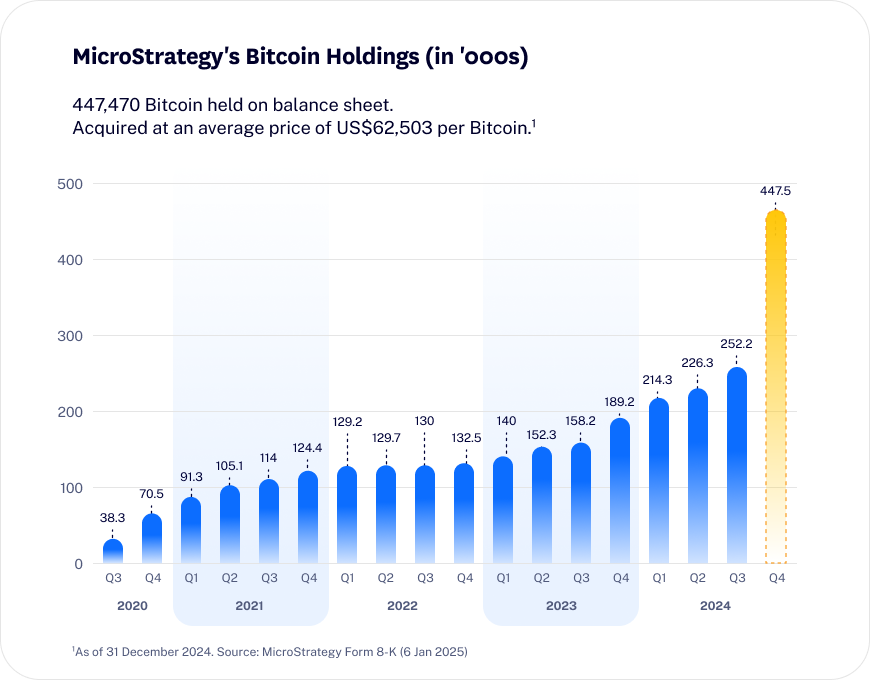
As its reserves grew, MicroStrategy’s leadership team also evolved its entire corporate strategy to make way for Bitcoin. Its leadership team now considers MicroStrategy to be running two business strategies in parallel with one another.
"We have a Bitcoin strategy in addition to our software strategy. So if you just keep in mind that we've got 2 strategies, we're going to pursue them both very enthusiastically, then I think that's the best way to think about the company.”
- Michael Saylor, Q4 2020 Earnings Call.
In addition to making Bitcoin its reserve asset, MicroStrategy now also aims to increase its Bitcoin exposure due to its belief in the cryptocurrency’s long-term outlook. It’s now shifted to using the power of capital markets to acquire more Bitcoin.
Last October 2024, MicroStrategy shared its most structured Bitcoin strategy yet.
Microstrategy’s 21-21 strategy
From 2025 to 2027, MicroStrategy aims to raise a total US$42 billion in capital – comprised of US$21 billion of equity capital and US$21 billion of fixed income capital – to be used for acquiring more Bitcoin.
The goal of the strategy is to create more shareholder value using leverage.
MicroStrategy’s BTC Yield
However, the strategy comes with one glaring issue – increasing debt and share dilution.
In order to combat this, MicroStrategy introduced a new key performance indicator (KPI) alongside its 21-21 strategy – the BTC Yield.
Not to be confused with traditional Yield calculations (i.e. dividend yield), MicroStrategy’s BTC Yield is described as such:
“BTC Yield is a period-to-period percentage change in the ratio of our total bitcoin holdings to our assumed diluted shares outstanding… If we increase our total bitcoin holdings over a given period at a faster pace than we increase our assumed diluted shares outstanding, we achieve a positive BTC Yield.”
In simpler terms, a positive BTC Yield for a period means th
at MicroStrategy bought more Bitcoin than shareholders saw their shares dilute – overall increasing shareholder value for each investor. Or at least, that’s what the company says.
MicroStrategy aims to have a BTC Yield of between 6-10% a year for the next three years.
But while that may explain share dilution…
How about MicroStrategy’s increasing debt?
The execution of this strategy will not be the first time MicroStrategy uses debt to purchase Bitcoin.
Since 2020, MicroStrategy has already gone through several rounds of debt capital raises – issuing a mixture of bonds, hybrids and convertibles. As at 30 September 2024, MicroStrategy’s balance sheet showed a grand total of US$4.21 billion in long-term debt.
However, here’s where MicroStrategy’s leadership team has been extremely crafty – all this debt is composed of unsecured loans. In layman terms, it means that none of MicroStrategy’s assets are being held as collateral for these loans. Secured debt means there is a collateral attached to the loan.
Why is that important?
Because it significantly reduces the company's risk exposure. If MicroStrategy were to face financial trouble or default on its loans, creditors wouldn’t have direct claims over its Bitcoin holdings or other assets. Instead, the company retains full control of its reserves, giving it the flexibility to navigate market fluctuations without the pressure of liquidating assets to cover debts.
But interestingly, this isn’t a result of MicroStrategy only having issued unsecured loans. It’s that every time MicroStrategy has, the company either raises more equity or issues shorter-term unsecured notes to pay off its long-term secured debt.
Truly, the strategy behind MicroStrategy’s debt structure is nothing short of impressive.
Did you know?
In March 2022, MicroStrategy had US$205M worth of loans from Silvergate Capital, secured by nearly 20,000 Bitcoin. When Bitcoin’s price fell below US$21,000, there were talks that MicroStrategy had triggered a “margin call,” which means a demand for more capital or collateral to further secure the loan or Silvergate would’ve forced MicroStrategy to sell off the Bitcoin used as collateral. MicroStrategy denied that it triggered a margin call, however its share price fell heavily following the news.
How MicroStrategy’s numbers look
Now that you understand how MicroStrategy works as both a data analytics software firm and a Bitcoin Treasury Company, let’s look at how its numbers look:
- Consistent revenues: MicroStrategy generates revenue through its software business using a subscription and licensing model. Over the last decade, its revenues ranged between US$480 million to US$580 million a year.
- Strong gross profit margin: The company has recorded full-year gross profit margins of between 77% to 81% over the last decade – high, but relatively normal for a software business.
- Net losses since its change of strategy: MicroStrategy recorded net losses every year from 2020 to 2022 (i.e. since it switched to becoming a Bitcoin Treasury Company). In 2023, it only recorded accounting profits thanks to beneficial tax treatments. Prior to 2020, MicroStrategy recorded net income every year since 2004.
- Extremely high exposure to Bitcoin: The carrying value (US$6.85B) of MicroStrategy’s Bitcoin holdings took up a massive 82% of total assets as at 30 September 2024.
- Billions of debt: While the company’s 21-21 plan is set to be executed from this year, MicroStrategy already began raising cash through debt in 2020. As at 30 September 2024, MicroStrategy recorded US$4.2 billion of long-term debt on its balance sheet.
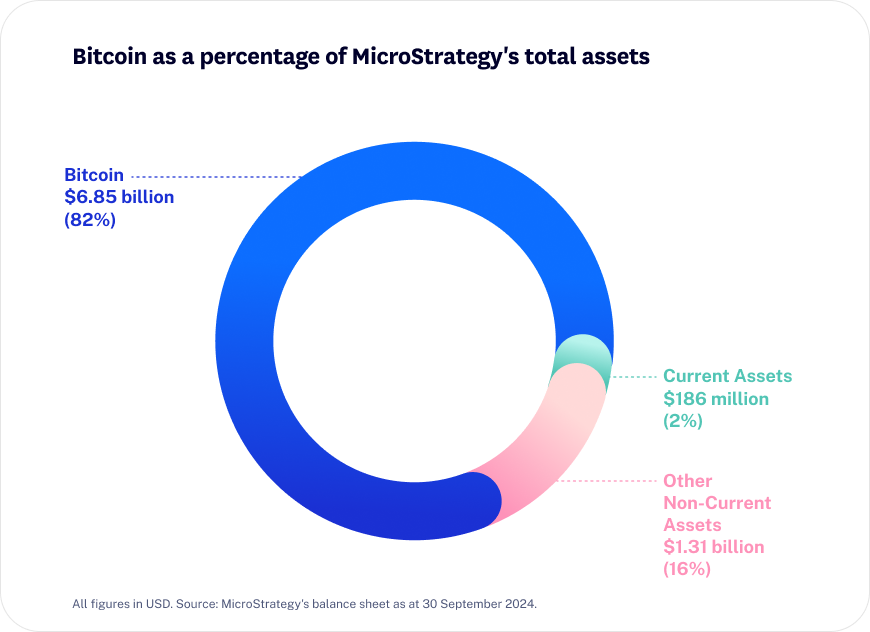
Why MicroStrategy has been recording net losses
As mentioned, MicroStrategy began recording net losses since it became a Bitcoin Treasury Company.
The biggest reason for this was due to cryptocurrency not yet being recognised by a distinct asset class by accounting standards – companies that held crypto were required to record them as “intangible assets” in their balance sheets. Intangible assets brought with them a new type of expense that MicroStrategy was required to record: impairment.
Accounting rules for intangibles required MicroStrategy to write down (or impair) the carrying value of its Bitcoin to its lowest point each quarter if market value ever fell below the purchase price. Conversely, MicroStrategy wasn’t allowed to write it up even when Bitcoin’s market price grew.
As such, MicroStrategy posted impairment losses nearly every quarter due to the high volatility of Bitcoin’s price. As you can see, this really affected MicroStrategy’s bottom line.
But of course, MicroStrategy didn’t take this sitting down.
New accounting treatment for cryptocurrency
In mid-2023, MicroStrategy sent the Financial Accounting Standards Board (FASB) a letter requesting for fair value accounting for crypto assets. Fair value accounting allows companies to reflect the current market value of their crypto asset holdings rather than recording them at their original purchase price and only recognising losses when their value drops.
The appeal was accepted. In December 2023, the FASB issued a new accounting standard for crypto assets – allowing companies to “measure certain crypto assets at fair value, with changes in fair value recorded in net income in each reporting period.”
The standard was set to be effective beginning mid-December 2024.
“Changes in fair value recorded in net income”
Yes, it’s a massive deal for MicroStrategy.
The new standard means that MicroStrategy will now have the ability to write up the value of its Bitcoin and recognise it as a gain on its income statement.
After years of only impairment losses – can you imagine how much MicroStrategy will be able to write up from this year?
We’ll leave that answer to the near future.
Will MicroStrategy’s strong price performance continue?
MicroStrategy’s share price has shown a strong correlation with Bitcoin’s price. With Bitcoin hitting the milestone of US$100,000 in 2024, it's unsurprising that MicroStrategy’s share price also rallied over the past year.
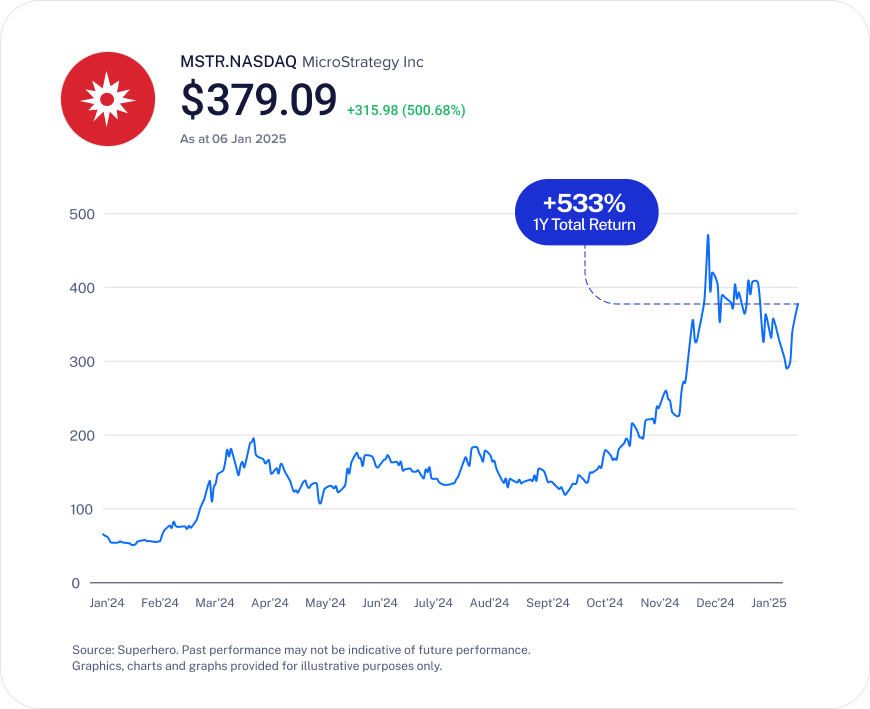
2025 is shaping up to be a milestone year for MicroStrategy. We’ll be seeing the rollout of its 21-21 plan, the introduction of a favourable new accounting treatment, and a supportive macroeconomic environment fueled by U.S. Federal Reserve rate cuts.
Would you say its valuation is justified?
As always, it is essential to conduct your own research and due diligence before making any investment decisions. Superhero does not provide financial advice that considers your personal objectives, financial situation or particular needs. All investments carry risk so please consider carefully before investing. Remember that past performance is not indicative of future performance. Graphics, charts and graphs provided for illustrative purposes only.

Become a part of
our investor community
Why you should join us:
- Join free and invest with no monthly account fees.
- Fund your account in real time with PayID.
- Get investing with brokerage from $2. Other fees may apply for U.S. shares.
Read our latest articles
Make knowledge your superpower and up your skills and know-how with our news, educational tools and resources.








